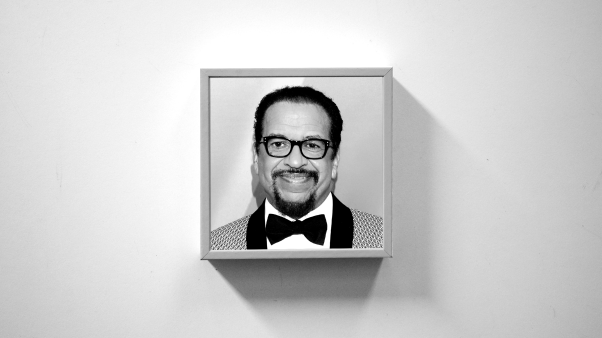My father traveled from Texas to Minnesota for my seminary graduation. At some pre-ceremony gathering, he was chatting with my adviser about the latter’s work in biblical hermeneutics. “But,” he asked, befuddled, “don’t you just sort of read the Bible and understand it? Doesn’t it just mean what it says?”
The Rise and Fall of Dispensationalism: How the Evangelical Battle over the End Times Shaped a Nation
Wm. B. Eerdmans
400 pages
$29.99
Seven years later, Republican presidential candidate Nikki Haley kicked off her campaign with a speech prefaced by televangelist, author, and activist John Hagee. Opening with a prayer, he praised Haley, who’s seeking to be commander-in-chief of the United States, as a “defender of Israel.”
And around the same time, I was working on an article about American evangelicals’ skepticism of human-caused climate change. The inevitable question I had to address: Do evangelicals think it’s okay to abuse the earth because we’re all just waiting around for the Rapture? As Fox News host Sean Hannity said in 2022, “If [the world] really [is] gonna end in 12 years, to hell with it all! Let’s have one big party for the last 10 years, and then we’ll all go home and see Jesus.”
The link between these three vignettes is the subject of Daniel G. Hummel’s astute new history, The Rise and Fall of Dispensationalism: How the Evangelical Battle over the End Times Shaped a Nation. Dispensationalism is commonly characterized as an eschatology, but as Hummel demonstrates in his two-century survey of its ecclesial, scholarly, political, and cultural development, “the end times are just one dimension of the theology of dispensationalism and its wider legacy.”
The ”plain meaning” model of biblical interpretation my father invoked, Hagee’s assumption that support for the state of Israel is a key qualification for the American presidency, and the widespread perception that evangelicals don’t care about a planet we expect to burn—if anything like that is familiar, Hummel says, “then you’ve seen patterns of thinking that have been deeply shaped by dispensationalism.”
Rise and Fall’s claim is ambitious: Hummel contends that dispensationalism shaped not just American fundamentalism or evangelicalism but the United States as a whole. To this day, he writes, dispensationalism remains “one of America’s most resilient and popular religious traditions, one that taught Christians to wait with anticipation for a coming kingdom of God that would wipe away the warring kingdoms of men, but not just yet.”
But it has also moved well outside church walls—so much so that “Americans of many backgrounds” have “an essentially premillennial vision of the future,” a secularized expectation of “declining social cohesion and rising existential threats that [will] end in era-defining catastrophe.” As a formal school of theology, dispensationalism has sharply declined in the last 50 years. But as a cultural and political force, its influence is stronger than ever. In that sense, we’re all dispensationalists now.
Five pieces
Rise and Fall is detailed but not difficult. Hummel writes in clear prose accessible to lay readers, and his interest in dispensationalism isn’t merely academic. Raised in a family whose theology shelves were stocked with dispensationalist authors, he now works for a Christian academic organization at the University of Wisconsin-Madison and has published here at CT.
Though not without authorial perspective, then, this is not a polemical work. Nor does it take the tone of the cultured anthropologist braving the fundamentalist hinterlands. Hummel is never contemptuous toward his subjects, but he makes no attempt to salvage ideas from ties to dispensationalism that their adherents might find embarrassing. Rise and Fall is a workmanlike book, and its “great contribution,” as Scandal of the Evangelical Mind author Mark A. Noll writes in a glowing foreword, “is to take a story that ‘everyone knows’ and show that what ‘everyone knows’ has barely scratched the surface.”
That story begins by delineating the scope of dispensationalism as a theology. In Hummel’s sketch, it includes five big pieces, with its distinct eschatological timeline—rapture, tribulation, antichrist, divine preservation of a remnant of Israel, the Second Coming, Armageddon, the binding of Satan, Christ’s 1,000-year reign from Jerusalem, a second defeat of Satan, the final judgment, and a blessed eternity with God—only the flashiest.
What are the other pieces? Dispensationalism takes its name from the piece that has proven least influential in American culture writ large: its theory of time, which divides human history into “a series of dispensations that inevitably ended with the failure of humans to fulfill their obligations to God.” (In most tellings, there are seven dispensations total, and we’re at the bottom of the sixth.) Closely linked to that is the system’s theory of humanity, which is strictly divided into God’s two peoples—the church and Israel, their respective heavenly and earthly purposes forever distinct—and “the nations,” who are everyone else.
Dispensationalism includes, too, “a unique biblical hermeneutic.” However, this evolved over time, from early investment “in symbolical, allegorical, and typological readings of Scripture” to an insistence on “plain,” “commonsense,” or “literal” readings of the 20th and 21st centuries that tend “to equate nonliteral readings of prophetic passages with a rejection of inerrancy.”
And dispensationalism has a distinct theory of salvation, the piece that alone may rival its eschatology in how it dominates popular conceptions of evangelicalism. This “free grace” model calls to mind praying a one-time “sinner’s prayer” or “accepting Jesus into your heart” at the revivalist’s feet. As Hummel explains, it “lowered the bar of salvation to little more than a onetime mental assent to the proposition that Jesus is Savior,” and it overwhelmed “broader American understandings of being ‘born again.’”
With this description in place, Hummel turns to his history proper. He traces the development of dispensationalism from Plymouth Brethren preachers like John Nelson Darby in rural Ireland through institutional churches like Chicago’s Moody complex in the Reconstruction Era and the Gilded Age to fundamentalist-liberal controversies of the early-20th century and the mid-century rise of what we now call evangelicalism. (CT has a few cameos, and CT founder Billy Graham makes an extended appearance.)
The latter half of this timeline, from around 1920 onward, will likely be of greatest interest to most readers, or at least to those approaching the book as observers of evangelicalism today. Stocked with many characters still actively shaping the nation, it’s a devastating account of dispensationalism’s commercialization. The popularized dispensationalism most Americans now know was fashioned, Hummel argues, “not by theologians but by the theologically uninterested or illiterate,” with deleterious effects for the evangelical movement and American society as a whole.
Dispensationalism’s political consistency across decades is particularly striking. The very term conservative as a preferred political and theological label, long since part of the furniture, has dispensationalist roots. The concept of the “world system”—an older generation of dispensationalists’ term for “the interlocking institutions, organizations, and structural powers helmed by elites that ran the world”—has gone a hundred years unchanged. Evangelist Billy Sunday’s 1918 insistence that “no man can be true to his God without being true to his country” would slide neatly into many Republican stump speeches in 2024. Pentecostal preacher Aimee Semple McPherson beat the God’s Not Dead franchise to the punch in 1923 with a sermon entitled “Trial of the Modern Liberalist College Professor versus the Lord Jesus Christ.”
Even the latest vogue in right-wing conspiracism—You’ll own nothing. And you’ll be happy. You will eat the bugs. You will live in the pod.—was prefigured by Left Behind author Tim LaHaye in 1983, who charged that the goal of “the Illuminati, Bilderbergers, Council on Foreign Relations, and, more recently, the Trilateral Commission” was “to reduce the standard of living in our country so that someday the citizens of America will voluntarily merge with the Soviet Union.” Pop dispensationalism gave “cosmic meaning to the mobilization of Christian voters” in prior generations, Hummel observes, and does the same today.
Three questions
Hummel’s concluding chapters bring his account into very recent memory, and they left me with three big questions: one he raised and two I wish he’d at least briefly addressed.
First in the latter category is a matter of history. Hummel makes clear that the question of theological precedent has long been a point of contention around dispensationalism generally and the doctrine of the Rapture specifically. From the very beginning, Darby “insisted [his innovations] were recoveries rather than novelties,” and into the late-20th century, dispensationalists and their critics alike “charged the other with lacking premodern precedents … with both sides claiming support in the early fathers.”
As Hummel notes, the late Christian reconstructionist Gary North promoted research “attempting to discredit the origins of the rapture by tracing them to a mentally unstable teenage girl, Margaret MacDonald, who saw visions in 1830, and from whom John Nelson Darby purportedly stole the idea of an imminent rapture.” Hummel labels that origin story a “conspiracy theory [that] nonpartial experts found … unlikely,” but he doesn’t clarify how Darby hit on the idea of the Rapture or to what extent claims of its long theological pedigree have merit.
Second, Hummel documents how past political upheavals played a role in shifting the dominant American perspective on the end times. For example, the “days of postmillennial consensus [among American Christians] ended in the 1860s,” he writes, as “many evangelicals who experienced the [Civil War] and its aftermath” decided that “correcting modern social ills [was] too difficult an endeavor and, in any case, a secondary task to evangelization.” Conversely, some in the early Religious Right, believing political victory was within reach, “rejected an imminent rapture and future kingdom as antithetical to urgent political organizing.”
But Hummel doesn’t explore whether some comparable shift may be looming as Christian nationalism and other illiberal mindsets gain currency. If you have new hope of establishing explicitly Christian governance, if you believe (as former President Donald Trump said in March) the next presidential election is “the final battle” for America, if you sincerely expect to “take back” your country, is there room for the Rapture in your 10-year plan? Sociologist Samuel Perry has speculated on Twitter that “we could see an increase in post-millennialism in Christian Right circles as post-mil provides better rationale for Christian nationalist goals than the dominant pre-mil view.” Hummel’s perspective would be a valuable contribution to that discussion. [Author’s note: I was able to speak with both Perry and Hummel for a CT column on this subject after writing this review but before its publication.]
Finally, Rise and Fall ends with a challenging observation:
In the wake of [scholastic] dispensationalism’s collapse, the eschatological sight of the American church has blurred. “Good!” skeptical readers might exclaim—better a vague vision than a false one. And yet the story of dispensationalism does not allow for such an easy judgment.
The theological void left by dispensationalism—one of only a few sustained attempts to create a fundamentalist theological system in the twentieth century—has not remained empty. Evangelicals, and Americans more broadly, have only multiplied doomsday speculation since the collapse of dispensational theology in the 1990s. Its remnants in pop dispensationalism have been thrust into an ocean of raging American apocalypticisms that includes doomsayers of the Anthropocene, Replacement Theory extremists, QAnon trolls, techno pessimists, and neo-Malthusians.
For all the problems that theological apocalypticism posed in the twentieth century, it is likely that irreligious apocalypticism in the twenty-first will prove to be even more disruptive.
As one of those skeptical readers, this is the question I’ll have to mull: Are American Christians better off after dispensationalism’s fall than before it?
That is, have we moved on to a faithfully, productively vague vision of the end times, or did we plunge into a multiplicity of false visions instead? And do we sincerely look forward to Christ’s return, however the timeline may run? Whatever their faults, the dispensationalists never failed to say with fervor, “Come, Lord Jesus.”
Bonnie Kristian is editorial director of ideas and books at Christianity Today. She is the author of Untrustworthy: The Knowledge Crisis Breaking Our Brains, Polluting Our Politics, and Corrupting Christian Community.










